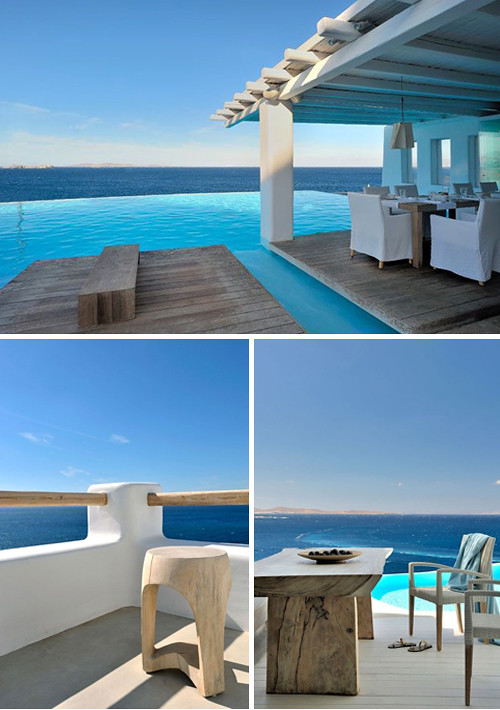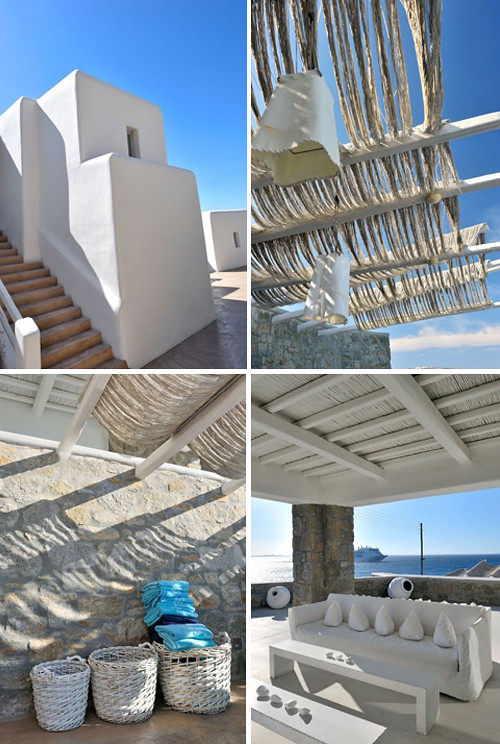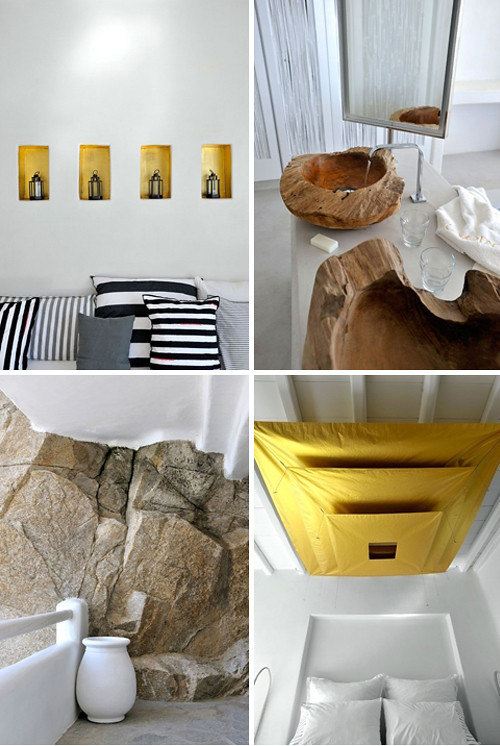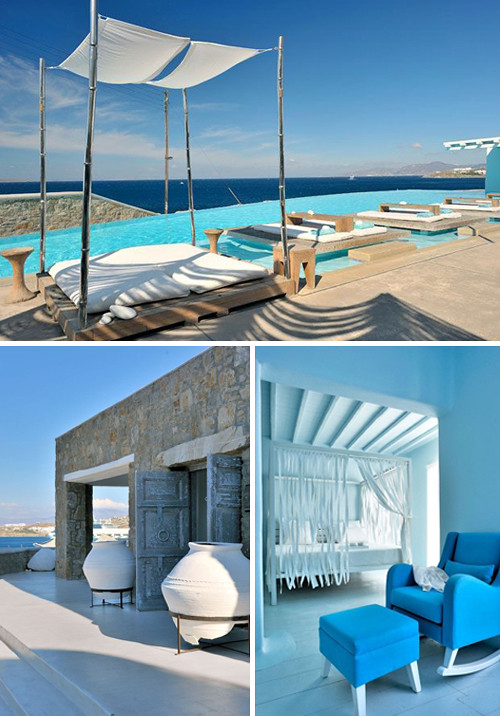- ihateseagulls-:(via naejanod)

ihateseagulls-:(via naejanod)
- Be like the bamboo: 7 lessons from the Japanese forest
The forests that surround our village here in Nara, Japan are filled with beautiful bamboo trees. In Japan, the symbolism of the bamboo plant runs deep and wide and offers practical lessons for life and for work. I summarized the lessons below with presentation and learning in mind, but as you read these seven lessons from bamboo, try think of practical implications for your own work.
(1) Bend but don’t break. Be flexible yet firmly rooted
One of the most impressive things about the bamboo in the forest is how they sway with even the slightest breeze. This gentle swaying movement with the wind is a symbol of humility. Their bodies are hard and firm and yet sway gently in the breeze while their trunks stay rooted firmly in the ground below. Their foundation is solid even though they move and sway harmoniously with the wind, never fighting against it. In time, even the strongest wind tires itself out, but the bamboo remains standing tall and still. A bend-but-don't-break or go-with-the-natural-flow attitude is one of the secrets for success whether we're talking about bamboo trees, answering tough questions in a Q&A session, or just dealing with the everyday vagaries of life.
(2) Remember: What looks weak is strongThe body of a single bamboo tree is not large by any means when compared to the other much larger trees in the forest. It may not look impressive at first sight at all. But the plants endure cold winters and extremely hot summers and are sometimes the only trees left standing in the aftermath of a typhoon. They may not reach the heights of the other trees, but they are strong and stand tall in extreme weather. Bamboo is not as fragile as it may appear, not by a long shot. Remember the words of a great Jedi Master: “Size matters not. Look at me. Judge me by my size do you?” We must be careful not to underestimate others or ourselves based only on old notions of what is weak and what is strong. You may not be from the biggest company or the product of the most famous school, but like the bamboo, stand tall, believe in your own strengths, and know that you are as strong as you need to be.
(3) Be always ready
Unlike other types of wood which take a good deal of processing and finishing, bamboo needs little of that. As the great Aikido master Kensho Furuya says in Kodo: Ancient Ways, “The warrior, like bamboo, is ever ready for action.” In presentation or other professional activities too, through training and practice, we can develop in our own way a state of being ever ready.
(4) Unleash your power to spring back
snow. The bamboo endured the heavy burden of the snow, but in the end it had to power to spring back as if to say “I will not be defeated.”Bamboo is a symbol of good luck and one of the symbols of the New Year celebrations in Japan. The important image of snow-covered bamboo represents the ability to spring back after experiencing adversity. In winter the heavy snow bends the bamboo back and back until one day the snow becomes too heavy, begins to fall, and the bamboo snaps back up tall again, brushing aside all the
(5) Find wisdom in emptiness
It is said that in order to learn, the first step is to empty ourselves of our preconceived notions. One can not fill a cup which is already full. The hollow insides of the bamboo reminds us that we are often too full of ourselves and our own conclusions; we have no space for anything else. In order to receive knowledge and wisdom from both nature and people, we have to be open to that which is new and different. When you empty your mind of your prejudices and pride and fear, you become open to the possibilities.
(6) Commit to (continuous) growthBamboo trees are among the fastest-growing plants in the world. It does not matter who you are — or where you are — today, you have amazing potential for growth. We usually speak of Kaizen or continuous improvement that is more steady and incremental, where big leaps and bounds are not necessary. Yet even with a commitment to continuous learning and improvement, our growth — like the growth of the bamboo — can be quite remarkable when we look back at what or where we used to be. Even though the bamboo that is outside my window grows quite rapidly, I do not notice its growth from day to day. We too, even when we are making progress, may not notice our own improvement. How fast or how slow is not our main concern, only that we’re moving forward. The bamboo grows fastest around the rainy season. You too may have “seasons” where growth accelerates, but is slower at other times. Yet with sustained effort, you are always growing. Do not be discouraged by what you perceive as your lack of growth or improvement. If you have not given up, then you are growing, you just may not see it until much later.
(7) Express usefulness through simplicity
Aikido master Kensho Furuya says that “The bamboo in its simplicity expresses its usefulness. Man should do the same.” Indeed, we spend a lot of our time trying to show how smart we are, perhaps to convince others — and ourselves — that we are worthy of their attention and praise. Often we complicate the simple to impress and we fail to simplify the complex out of fear that others may know what we know. Life and work are complicated enough without our interjecting the superfluous. If we could lose our fear, perhaps we could be more creative and find simpler solutions to even complex problems that ultimately provide the greatest usefulness for our audiences, customers, patients, or students.
- Griid, iPad Ableton Controller, in Exclusive Photos, Looks Clean and Colorful

The developers of Griid, the Ableton Live controller on iPad created in association with Richie Hawtin, have shared photos and screen captures early with CDM to give us a look at the upcoming app. Just over a decade after its original inception, Ableton Live itself remains a ground-breaking user interface design. Love it or hate it, it’s a benchmark in thinking about how music apps might look. Griid is compelling in part because it re-imagines how that central Session View and clip launching might work, now in the context of a touch tablet. Personally, I like the results. As on the Lemur, bold, saturated colors and contrast on a black background are central, of course. It’s also nice to see extraneous visual information removed. And for anyone with epic-sized sets of clips in Live, you’ll like the massive overview.
This also makes me wonder what may be possible with Renoise’s pattern editor, which also uses colored blocks to show off units of patterns and the like (and could similarly be controlled from new input devices thanks to its API). All in all, I think we could see an explosion of thinking about control in performance. If that leads to better performances – or if we just have more fun – I’m for it.
Let us know what you think of the shots, and if it gives you any insights into what’s happening with the app or how you might play your own live sets. For that matter, is touch something you’d consider in the first place, or would you prefer tactile control?




- Looks like Aang wasn't the last Airbender after all
Looks like Aang wasn’t the last Airbender after all:
The Avatar: The Last Airbender cartoon sequel is official, and here are the details.
- cavo tagoo on mykonos, greece
I really can use a holiday right now but unfortunately (with me being pregnant) it won’t be before next year before we will be able to travel again. In the mean time I keep dreaming about luxurious hotels like this one in Greece. Cavo Tagoo is a beautiful boutique hotel on the island of Mykonos. The hotel, which is ingeniously engineered into the cliff-side, consists of several buildings connected to each other through a maze of staircases like the alleys of Mykonos.
The hotel itself is modern and luxurious but it has been build with respect to the island’s traditional elements.
All guest rooms and suites have been designed to embody a contemporary aesthetic while remaining true to the traditional character and architecture of the Cycladic Islands. For more information you can visit the hotel’s website.
(images from Marie Claire Maison)

The personal website of Alex Weber



